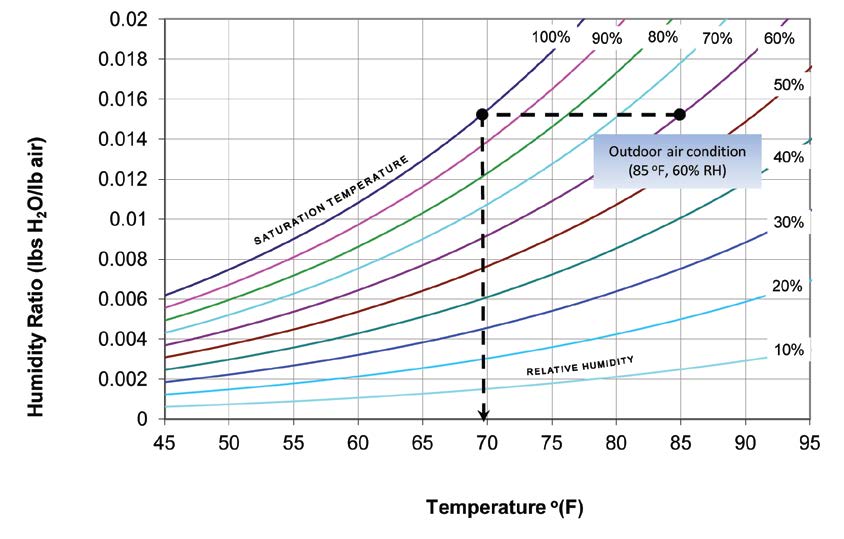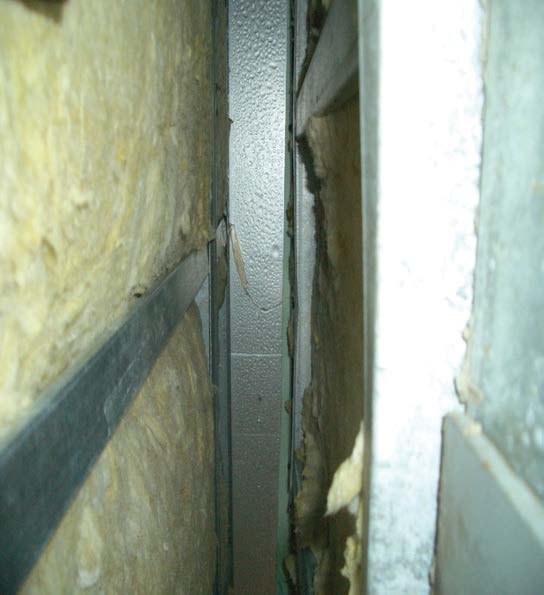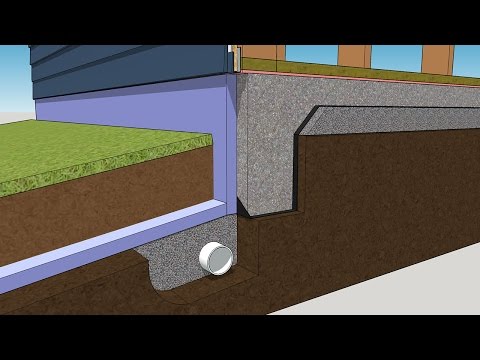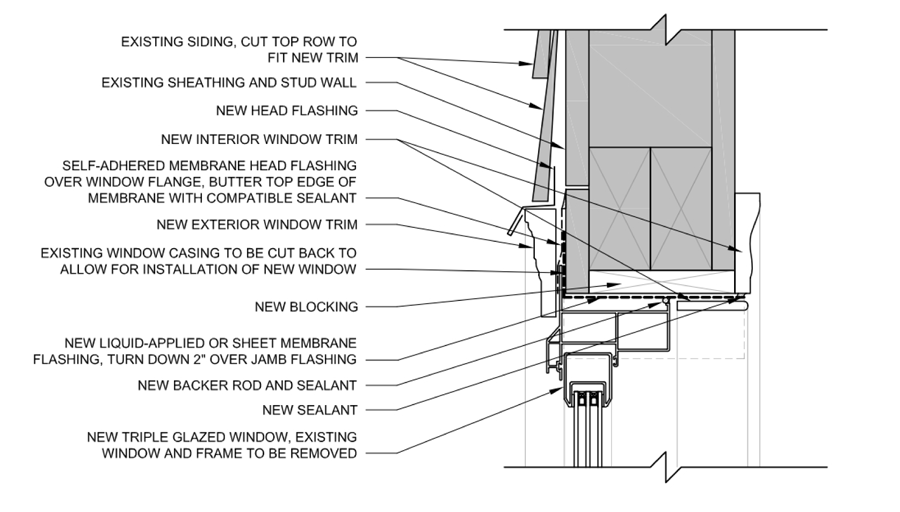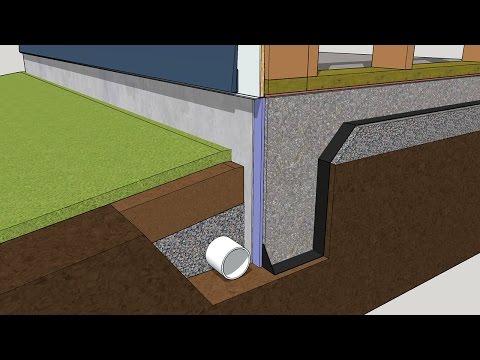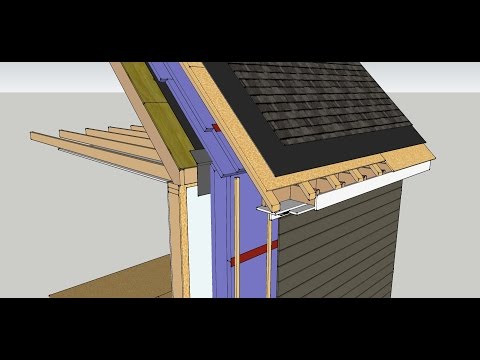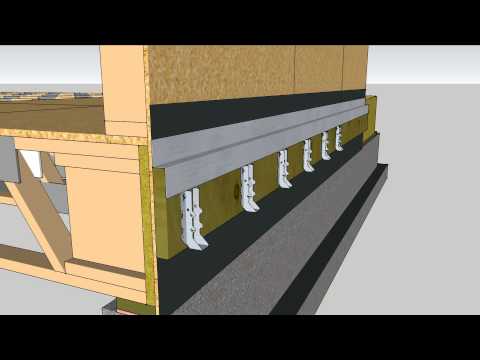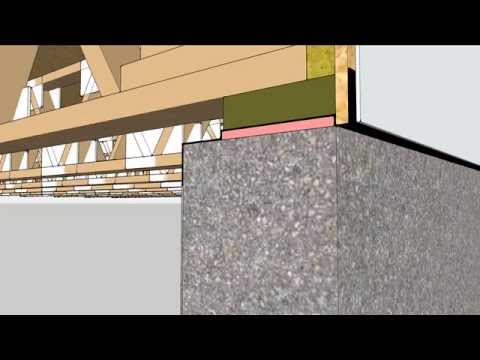In Moisture Management: Three Design Rules, we identified three targets for your moisture control hit list:
- Control liquid water
- Manage condensation
- Use moisture-resistant materials for wet locations
We are going to take a closer look at item 2: Managing condensation
con·den·sa·tion | ˌkänˌdenˈsāSH(ə)n | noun
The conversion of a vapor or gas to a liquid. Synonyms: precipitation, liquefaction, deliquescence
—The Google
Condensation happens when moisture in the air (vapor) hits a cool enough surface to convert the vapor into water. The moisture condenses from a gas to a liquid, and then it drips into a puddle.
The temperature that triggers condensation is the dew point. It's like the opposite of freezing point, only different. Because the opposite of freezing point is the boiling point, right? (Right.) The other opposite of freezing point is the dew point. Because of science.
Dew point is directly related to relative humidity (RH), it is the practical application of RH. The temperature at which moisture in the air becomes water on a window. Or a beer glass. Or your supply ducts.
Dew Point |ˈd(j)u 'pɔɪnt| noun
The dew point is the temperature of the air at which condensation occurs.
Relative humidity is the amount of water vapor in the air compared to the maximum amount the air can hold at its current temperature.
As the air gets warmer, it can hold more moisture. Therefore, if the amount of moisture in the air (say, five gallons) does not go up, then the relative humidity must go down. Because its all relative, right? See a great discussion of Relative Humidity here.
EPA says that to figure out the dew point, you need the temperature of the surfaces which may collect condensation (window, beer glass, supply ducts) and a psychometric chart.

A psychrometric chart graphs the physical and thermal properties of moist air. Image from EPA Water Management Guide. If charts make you dizzy, you can use this handy calculator instead.
One interesting relationship between RH and dew point: as the RH goes up (the curved lines on the chart), dew point squeezes itself closer to the air temperature. Because the lines are closer together on the chart. So at 90% RH, the dew point is a mere three degrees cooler than air temp.
Humidity is an issue almost everywhere
Three-degree shifts in temperature are pretty common everywhere in the world, so high humidity situations need to be taken seriously. Especially if you couple it with high temperature. Like Houston in July. Or Miami. Or just about anywhere in climate zone one and two and some of climate zone three some of the year. So like, most of North, Central, and South America.
Moisture vapor can come from inside or outside the house, it usually depends on the season which is the main driver. Interior moisture sources are predominantly from people and the stuff they do: cook, wash floors, wash clothes, dry clothes … Exterior sources are predominantly from the water cycle.
Damp basements and crawl spaces can add a lot to the indoor moisture load, too.
You can manage indoor moisture vapor mechanically with dehumidifiers, air conditioners, and bath fans. You can also open a window if the air outside is not more humid than the air inside.
[A note from the 'We Hope This is Obvious' desk: Damp basements and crawlspaces should be dried with construction techniques before trying ventilation. Fix the problem, do not ventilate the symptoms and hope for the best.]
Condensation in winter (usually) comes from the inside
Because there is usually a temperature gradient inside a stud or rafter cavity (with the outdoor temperature on one side and the indoor temperature on the other), there is a good chance that a dew point exists within.
Also, some parts are cooler than others because of their material properties: like a steel I-beam running through a house. Under the same conditions, the steel beam will be cooler than the wood framing it is hanging around with.
(See what we did there? 'Hanging around?' ;)
For dew point to be a problem inside a wall or roof, there needs to be moist air from some sort of pressurization. Pressure can come from wind, stack effect, and mechanical equipment, like supply air HVAC systems.
In winter, condensation usually happens on the upper floors of a house because of stack effect.
Condensation in summer (usually) comes from the outside
Most condensation problems in summer are caused by air conditioning, which cools the indoor air and dries it in the process. Cool, dry air naturally draws moisture from warm moist air. Because of science.
EPA Lists six things that contribute to condensation problems in summer:
- AC cools the indoor air (and the drywall along with it).
- Some surfaces are even cooler then the drywall, like cold water lines inside walls, refrigerant lines inside walls, and supply ducts inside all kinds of places.
- Sometimes AC units do not run long enough to dry (dehumidify) the air they cool. This raises dew point.
- Usually there are more fans blowing air out of a house than fans blowing in (bath fans, clothes dryers, range hoods). This sucks hot humid air into cracks in the envelope.
- More water gets into walls with brick or masonry sidings from solar driven moisture after a rain.
- Intentional/accidental vapor barriers (plastic sheeting installed by the insulator, vinyl wall paper installed by the painter, or a huge mirror installed by the huge mirror guy) trap the moisture flow and can really cause problems.
How to control condensation:
We have already said that to control condensation, you need to control the dew point, so it feels somewhat silly saying it again, but here you go:
To control condensation, you need to control the dew point.
Program the HVAC system to control humidity during both summer and winter, and when you tighten the envelope, take surface temperatures into consideration.
Dews and don'ts
- DO: Equip any residential HVAC system with dehumidification that keeps the home or apartment dry even when cooling is not needed
- DO: Equip any commercial building with a dedicated outdoor air system that ALWAYS keeps the incoming ventilation air dry (below a 55F dew pojnt)
- DON’t let the indoor dew point drift above 55F during the summer.
- DON’T let the indoor dew point go above 40F in cold climates in the winter, unless you’re prepared to invest LOTS of money in an airtight, indoor-side vapor barrier (as in a swimming pool enclosure or museum, where high winter dew points are a fact of life).
- Don't forget to lick the (building) envelope (yuck)
If no moist air is flowing through the walls and roof, then moisture cannot condense, right? And if the back of the plywood is warm, moisture will not condense either, right? Right and right.
On a new house or addition, air tight construction and exterior insulation are easy additions to make a warm, tight, dry wall. Retrofitting a house is a different story.
Just the same, EPA suggests meeting 2012 IECC minimum R-values, regardless of what code book your jurisdiction uses (because science is not supposed to follow county lines).
Exterior insulation is great for this because wood framing has a pretty low R-value. Low R value means cooler surface which can cause condensation.
‘Will it Rot? — a popular new desktop game!
When you are designing a wall or roof assembly, consider the ability of the wall or roof to dry. Are there any impermeable (or semi-impermeable) layers in the assembly? If so, can moisture move out in both directions from that impermeable (or semi impermeable) layer? If so, it's a go. If not, you’ve got rot.
<code>
2012 IRC:
- Chapter 13 — General Mechanical System Requirements
- Chapter 14 — Heating and Cooling Equipment and Appliances
- Chapter 15 — Exhaust Systems
- Chapter 16 — Duct Systems
</code>
Want more? Download the EPA Water Management Guide
